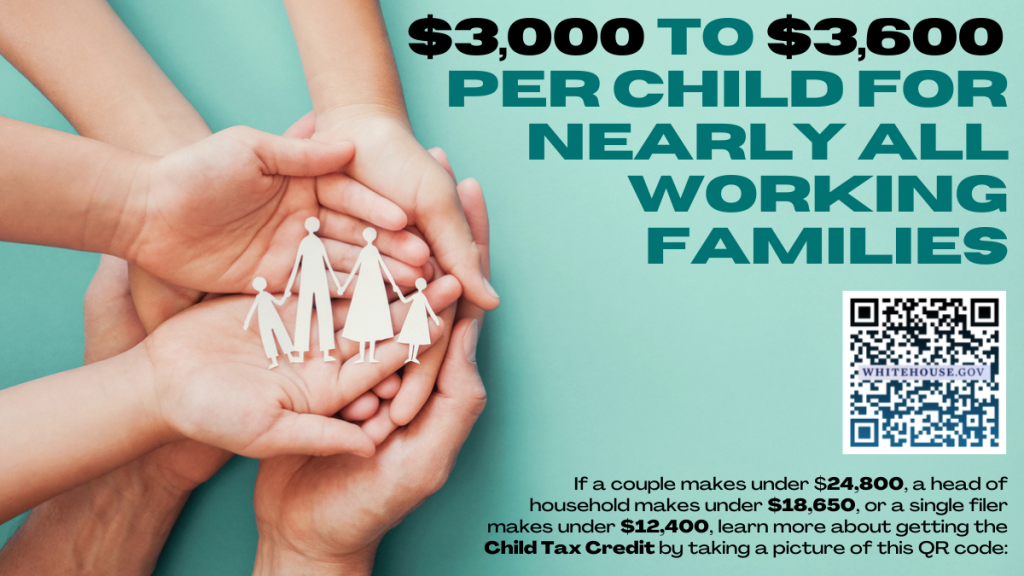
The CTC expansion is doing exactly what it was meant to do – and families and children are benefiting
Endia Villar, a working mom in Allen, Texas, with a two-year-old daughter and a baby on the way, was recently asked how she spent the $300 child tax credit deposit she received last month.
“Groceries,” she said. “I am pregnant, and I eat like a teenage boy. We needed more food. So it – it worked out perfectly.”
Endia is not alone. According to the U.S. Census Bureau’s most recent Household Pulse survey, 47 percent of parents receiving the expanded benefit used at least some of the funds on food, while 28 percent spent it on Internet, cell phones or other utilities. Almost a quarter of those surveyed spent it on clothing, and 17 percent of parents with at least one child under 5 used the extra money to help pay for child care.
“It looks like families are using this to pay for basic needs that their kids have,” said Diane Whitmore Schanzenbach, director of the Institute for Policy Research at Northwestern University. “These are things we know many families are struggling with. This extra payment is going to reduce the number of families at risk.
Overall, some 27 percent of parents said they mostly spent the child tax credit. Another 32 percent said they mostly saved it, and 40 percent said they mostly used it to pay down debt.
Nearly half of Latinx families and 45 percent of Black families said they mostly used it to pay down debt, compared to 37 percent of White families and 26 percent of Asian-American families. And 37 percent of Asian-American parents and 36 percent of White parents said they mostly saved the payment, compared to 27 percent of Black parents and 25 percent of Latinx parents.
Monthly payments will be paid out through the end of this year, adding up to half the total CTC the family can receive. Families will then be able to get a final lump sum payment when they file their taxes between January and April of next year. (Or even after April: families with incomes too low to be required to file tax forms can file later, and they will still receive the Child Tax Credit they’re owed.) But already there is evidence that the monthly benefit — $300 for every child 0 to 5 and $250 for every child 6 through 17 – is reducing hunger and hardship among families with children.
The Household Pulse survey found that fewer adults with children reported not having enough to eat after the first payment was sent on July 15. During the period from June 23 – July 5 (before the CTC was received), 11 percent of adults with children said that in the past week, they sometimes or often did not have enough to eat. But after the payment was received (July 21 – August 2), that proportion dropped to 8.4 percent. In the world of survey research, that decline is a big deal.
That’s the lowest rate of food insufficiency since the pandemic hit in full force in March 2020, Schanzenbach said. In comparison, people in households with no children did not see a reduction, suggesting that the Child Tax Credit was making the difference.
The survey also found that the July CTC payment helped families with children pay normal household expenses. It found that 29 percent of adults with children had difficulty paying expenses in the previous week – down from 31.5 percent a month earlier. Conversely, among households without children, the share of adults struggling to pay expenses increased slightly during the same period.
“A drop in the number of households with children that reported food insufficiency and trouble paying household expenses may be linked to the child tax credit checks issued last month,” Daniel J. Perez-Lopez, a statistician at the Census Bureau, wrote in a summary about the new survey results.
President Biden and congressional Democrats want to extend the CTC expansion, either by making it permanent or at least extending it through 2025. This news that the CTC expanded benefit already is helping families fight hunger and meet other household expenses can only give proponents of CTC expansion more momentum.

